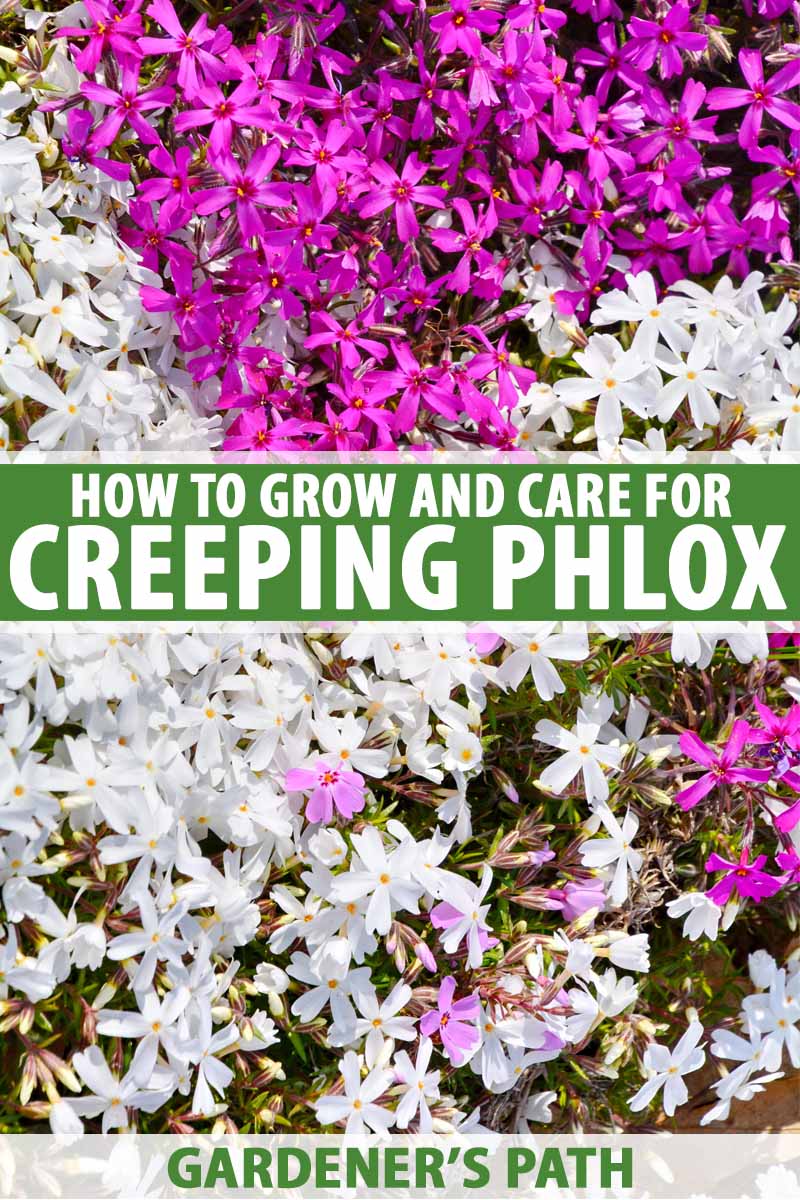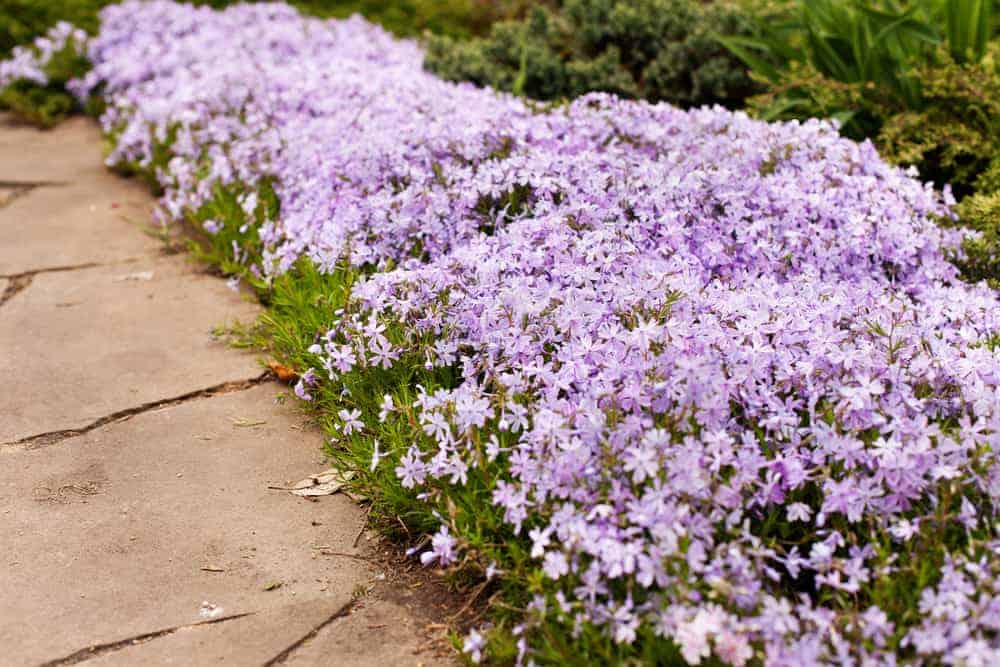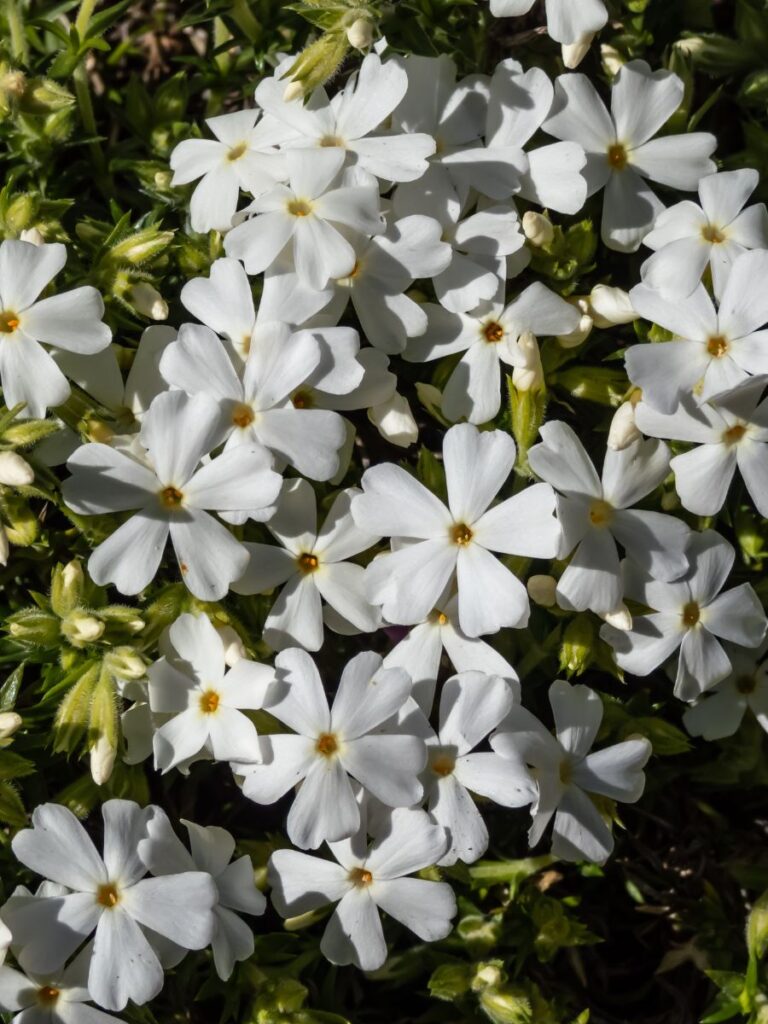Unlocking the Potential of Creeping Phlox: Choosing the Perfect Location
Creeping phlox (Phlox subulata) is a low-maintenance, spreading groundcover that can thrive in various conditions, making it an ideal choice for gardeners of all skill levels. To optimize its growth and flowering, it’s essential to select the right location for this perennial plant. When deciding where to plant creeping phlox, consider the amount of sunlight, soil type, and moisture levels in different areas of your garden. Creeping phlox can tolerate partial shade, but it produces the most vibrant flowers in full sun, typically requiring at least six hours of direct sunlight per day.
When evaluating potential locations, also consider the soil type and drainage. Creeping phlox prefers well-draining soil with a slightly acidic to neutral pH (around 6.0-7.0). If your soil is heavy clay or prone to waterlogging, it’s best to choose a different location or amend the soil with organic matter to improve drainage. Additionally, creeping phlox can be sensitive to extreme temperatures, so avoid planting it in areas with standing water or where water tends to collect.
By carefully selecting the perfect location for your creeping phlox, you’ll be rewarded with a lush, flowering groundcover that attracts pollinators and adds beauty to your garden. Remember to consider the mature size of the plant, which can spread up to 12-18 inches, and leave enough space for proper air circulation and growth. With the right location and conditions, creeping phlox can thrive and become a stunning addition to your garden.
How to Select the Ideal Spot for Creeping Phlox in Your Garden
When deciding where to plant creeping phlox, it’s essential to evaluate the amount of sunlight, soil type, and moisture levels in different areas of your garden. Creeping phlox can thrive in a variety of conditions, but it prefers well-draining soil and full sun to partial shade. To determine the best spot for your creeping phlox, start by assessing the sunlight patterns in your garden. Observe the areas that receive direct sunlight for at least six hours a day, as well as those that receive partial shade or dappled sunlight.
Next, consider the soil type and moisture levels in your garden. Creeping phlox prefers slightly acidic to neutral soil with a pH between 6.0 and 7.0. If your soil is heavy clay or prone to waterlogging, it’s best to choose a different location or amend the soil with organic matter to improve drainage. Additionally, creeping phlox can be sensitive to extreme temperatures, so avoid planting it in areas with standing water or where water tends to collect.
To further evaluate the ideal spot for your creeping phlox, consider the mature size of the plant, which can spread up to 12-18 inches. Leave enough space for proper air circulation and growth, and avoid planting it in areas with dense vegetation or competing plants. By carefully evaluating the sunlight, soil, and moisture levels in your garden, you can determine the best spot for your creeping phlox and enjoy its beautiful flowers and low-maintenance growth.
Understanding Creeping Phlox’s Soil Preferences: A Key to Success
Creeping phlox is a versatile groundcover that can thrive in a variety of soil conditions, but it has specific preferences when it comes to pH levels, nutrient needs, and drainage. To optimize the growth and flowering of creeping phlox, it’s essential to understand its soil requirements and make necessary adjustments to create a favorable environment.
Creeping phlox prefers slightly acidic to neutral soil with a pH between 6.0 and 7.0. If your soil is too alkaline or acidic, it can affect the plant’s ability to absorb essential nutrients, leading to poor growth and flowering. To determine your soil’s pH level, consider getting a soil test or using a DIY pH testing kit. If necessary, amend the soil with organic matter like compost or well-rotted manure to adjust the pH level.
In addition to pH levels, creeping phlox requires well-draining soil to prevent waterlogged soil conditions. If your soil is heavy clay or prone to waterlogging, consider adding organic matter or perlite to improve drainage. Creeping phlox also benefits from a balanced fertilizer diet, rich in nutrients like nitrogen, phosphorus, and potassium. Avoid over-fertilizing, as this can lead to weak growth and reduced flowering.
When deciding where to plant creeping phlox, consider the soil’s nutrient content and drainage. If your soil is lacking essential nutrients, consider adding a balanced fertilizer or compost to enrich the soil. By understanding and addressing creeping phlox’s soil preferences, you can create an optimal environment for healthy growth and flowering.
Maximizing Creeping Phlox’s Spreading Potential: Companion Planting Strategies
Companion planting is a technique that involves pairing different plants together to enhance their growth, health, and productivity. When it comes to creeping phlox, companion planting can be a great way to maximize its spreading potential and create a thriving garden ecosystem. By choosing the right companion plants, you can improve creeping phlox’s growth, increase its flowering, and even enhance its pest resistance.
Some popular companion plants for creeping phlox include low-growing herbs like thyme, rosemary, and oregano. These herbs not only complement creeping phlox’s flowers but also help to repel pests and improve soil health. Other good options include flowering bulbs like daffodils, tulips, and hyacinths, which can add a pop of color and interest to your garden.
When selecting companion plants for creeping phlox, consider their growth habits, soil preferences, and sunlight requirements. For example, if you’re planting creeping phlox in a sunny spot, choose companion plants that also prefer full sun. Similarly, if you’re planting in a shady area, choose companion plants that prefer partial shade.
Some specific companion planting combinations to try with creeping phlox include:
- Creeping phlox and thyme: This combination is perfect for a low-maintenance, fragrant garden bed.
- Creeping phlox and daffodils: This combination adds a bright, cheerful touch to your garden in early spring.
- Creeping phlox and oregano: This combination is great for a Mediterranean-inspired garden with a focus on herbs and low-growing flowers.
By incorporating companion planting into your garden design, you can create a beautiful, thriving ecosystem that showcases the best of creeping phlox. Remember to choose companion plants that complement creeping phlox’s growth habits and preferences, and don’t be afraid to experiment with different combinations to find what works best for your garden.
Creeping Phlox in Containers: A Great Option for Small Spaces
Creeping phlox is a versatile groundcover that can thrive in containers, making it an ideal option for small spaces, balconies, or patios. Growing creeping phlox in containers offers several advantages, including flexibility, better soil control, and reduced maintenance. By choosing the right container size and type, you can create a beautiful and thriving display of creeping phlox.
When selecting a container for creeping phlox, consider the mature size of the plant, which can spread up to 12-18 inches. Choose a container that is at least 6-8 inches deep and has good drainage holes to prevent waterlogged soil. Creeping phlox prefers well-draining soil, so avoid using containers with saucers or trays that can collect water.
Another advantage of growing creeping phlox in containers is the ability to control the soil quality. Creeping phlox prefers slightly acidic to neutral soil with a pH between 6.0 and 7.0. By using a high-quality potting mix specifically designed for containers, you can create an optimal growing environment for your creeping phlox.
In addition to choosing the right container and soil, consider the location of your container. Creeping phlox prefers full sun to partial shade, so choose a location that receives at least 4-6 hours of direct sunlight per day. Avoid placing containers in areas with extreme temperatures or wind, as this can affect the plant’s growth and flowering.
Some popular container options for creeping phlox include:
- Clay pots: These are a popular choice for containers and can add a decorative touch to your garden or patio.
- Plastic containers: These are lightweight and easy to move, making them a great option for small spaces or balconies.
- Wooden planters: These can add a natural and rustic touch to your garden or patio.
By growing creeping phlox in containers, you can enjoy the beauty and benefits of this low-maintenance groundcover in even the smallest of spaces. Remember to choose the right container size and type, and provide optimal growing conditions for your creeping phlox to thrive.
Common Mistakes to Avoid When Planting Creeping Phlox
While creeping phlox is a relatively low-maintenance groundcover, there are some common mistakes to avoid when planting it. By being aware of these potential pitfalls, you can ensure that your creeping phlox thrives and provides the desired benefits for your garden.
One of the most common mistakes is inadequate sunlight. Creeping phlox requires at least 4-6 hours of direct sunlight per day to produce plenty of flowers and maintain its vibrant color. If you’re planting in a shady area, consider using a different groundcover that tolerates shade better.
Another mistake is poor soil preparation. Creeping phlox prefers well-draining soil with a slightly acidic to neutral pH (around 6.0-7.0). If your soil is heavy clay or prone to waterlogging, amend it with organic matter like compost or well-rotted manure to improve drainage and fertility.
Insufficient watering is another common mistake. Creeping phlox requires consistent moisture, especially during its first growing season. Water your creeping phlox regularly, but avoid overwatering, which can lead to root rot and other problems.
Some other mistakes to avoid when planting creeping phlox include:
- Planting too deeply: Creeping phlox should be planted at the same depth as it was in the pot, with the crown (where the stem meets the roots) level with the soil surface.
- Not spacing correctly: Creeping phlox should be spaced 12-18 inches apart to allow for proper growth and spreading.
- Not mulching: Mulching around the base of your creeping phlox can help retain moisture, suppress weeds, and regulate soil temperature.
By avoiding these common mistakes, you can ensure that your creeping phlox thrives and provides the desired benefits for your garden. Remember to choose the right location, prepare the soil properly, and provide regular maintenance for optimal performance.
Creeping Phlox Varieties: Selecting the Best Option for Your Garden
Creeping phlox is a versatile groundcover that comes in a variety of colors and growth habits. With so many options to choose from, selecting the right creeping phlox variety for your garden can be a bit overwhelming. In this section, we’ll introduce you to some popular creeping phlox varieties and discuss their unique characteristics, growth habits, and flowering patterns.
‘Purple Beauty’ is a popular creeping phlox variety that produces vibrant purple flowers in the spring. This variety is known for its compact growth habit and ability to thrive in poor soil. ‘Pink Perfume’ is another popular variety that produces fragrant pink flowers and has a slightly more upright growth habit than ‘Purple Beauty’.
‘White Delight’ is a creeping phlox variety that produces white flowers with a pink blush. This variety is known for its vigorous growth habit and ability to spread quickly. ‘Candy Stripe’ is a unique creeping phlox variety that produces pink and white striped flowers. This variety is known for its compact growth habit and ability to thrive in shady conditions.
When selecting a creeping phlox variety, consider the color and growth habit you prefer. Also, think about the amount of sunlight and soil quality in your garden. By choosing the right variety, you can ensure that your creeping phlox thrives and provides the desired benefits for your garden.
Some other factors to consider when selecting a creeping phlox variety include:
- Bloom time: Creeping phlox varieties bloom at different times, so consider the time of year you want your garden to be in bloom.
- Hardiness zone: Make sure to choose a variety that is hardy in your zone to ensure it will thrive in your garden.
- Disease resistance: Some creeping phlox varieties are more resistant to disease than others, so consider this when making your selection.
By considering these factors and choosing the right creeping phlox variety, you can create a beautiful and thriving garden that will provide years of enjoyment.
Post-Planting Care: Tips for Encouraging Healthy Growth and Flowering
After planting creeping phlox, it’s essential to provide regular maintenance to encourage healthy growth and flowering. With proper care, creeping phlox can thrive and provide years of enjoyment. In this section, we’ll offer advice on how to care for creeping phlox after planting, including watering, fertilizing, and pruning.
Watering is crucial for creeping phlox, especially during its first growing season. Water your creeping phlox regularly, but avoid overwatering, which can lead to root rot and other problems. Aim to provide about 1 inch of water per week, either through rainfall or irrigation.
Fertilizing is also important for creeping phlox. Use a balanced fertilizer that is high in phosphorus to promote healthy root growth and flowering. Apply the fertilizer in the spring, following the manufacturer’s instructions.
Pruning is another essential aspect of post-planting care for creeping phlox. Prune your creeping phlox in the spring, removing any dead or damaged stems. This will help promote healthy growth and encourage new flowers to form.
Some other tips for post-planting care include:
- Mulching: Mulch around the base of your creeping phlox to retain moisture, suppress weeds, and regulate soil temperature.
- Pest control: Keep an eye out for pests like aphids, whiteflies, and spider mites, and use organic or chemical controls as needed.
- Disease prevention: Inspect your creeping phlox regularly for signs of disease like powdery mildew or root rot, and take action promptly if you notice any problems.
By following these tips and providing regular maintenance, you can encourage healthy growth and flowering in your creeping phlox. Remember to be patient, as creeping phlox may take some time to establish itself and reach its full potential.








:max_bytes(150000):strip_icc()/creeping-phlox-plants-2132214_04-4b765c75e9d54e9f9292f1b7e610ae7f.jpg)